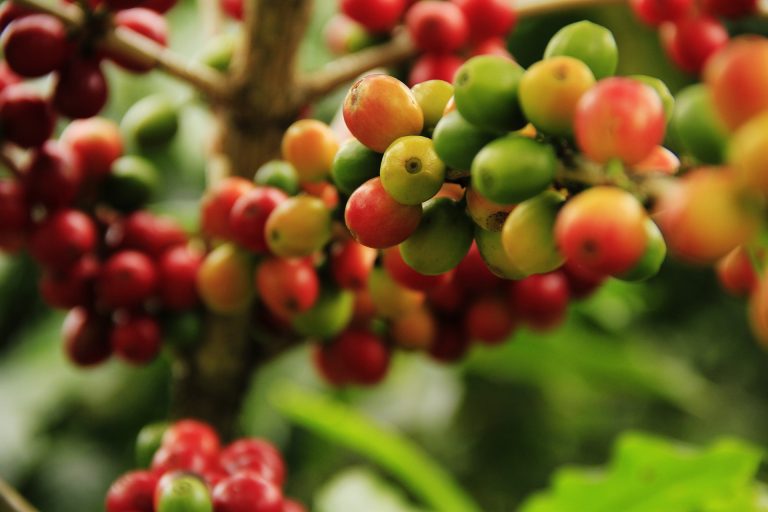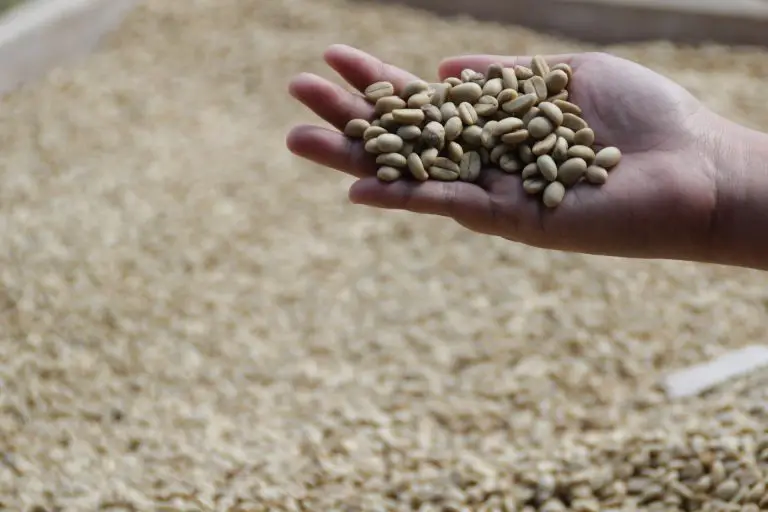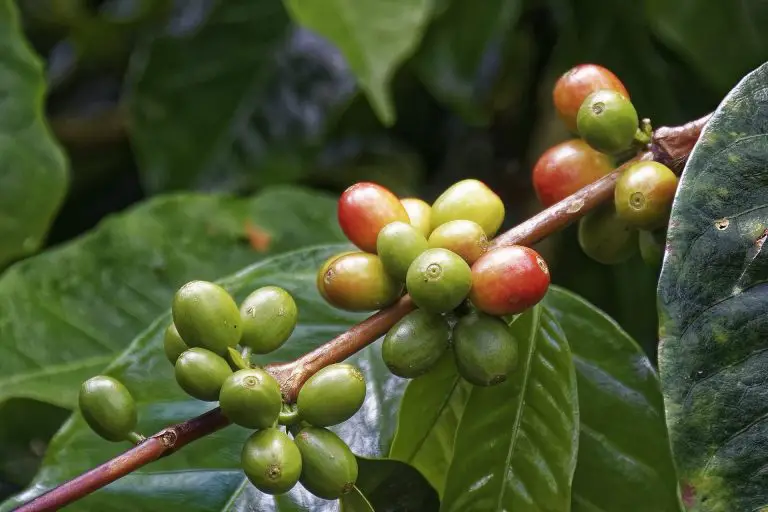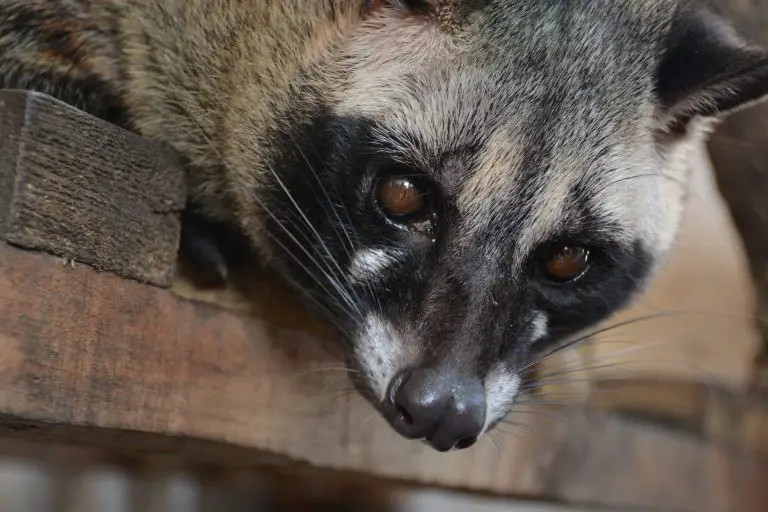Where Do Coffee Beans Come From?
Discover where coffee beans come from, how they’re processed, and which delectable varieties are globally available while learning how to grow your own.
Harvesting To Roasting, A Complete Overview
There are approximately 333 million people in the USA, and every day, it is estimated that 400 million cups of coffee are consumed. That’s more than a cup for every person, with current estimates averaging no less than 3.2 cups a day per coffee drinker. After all, not everyone partakes. Yet, with the ever-growing fondness for java, how many of us have ever stopped to think where coffee beans come from? We’ll be taking you through the basic types of coffee beans, where they originate, and how each variety ends up processed and ready to be enjoyed. There’s also a complete overview of a delectable, high-end coffee sourced from the stinkiest, strangest place coming up soon.
Where Do Coffee Beans Originate From?
Coffee is a plant with ancient origins and a diverse range of early use. While documented records can’t confirm accounts, the earliest tales connect coffee to a goatherder named Kaldi believed to have lived atop the Ethiopian plateau. Ethiopian lore professes that Kaldi (or Khalid) discovered coffee around 850 AD after noticing his goats becoming energetic after chewing on a particular bush’s red berries. Once Kaldi tried the berries himself, he became filled with energy, immediately seeing a sustained vigor overcoming him.
Kaldi The Goatherder And Coffee In Early Ethiopia
Fascinated by his findings, the goatherder headed to the local Sufi monastery, where a monk proclaimed the red berries to be the work of the devil and cast them promptly into the fire. A rich heavenly aroma arose from the roasting beans, leading the monks to realize they’d mistaken the beans for something ghastly instead of Godly. Quickly the monks stifled the fire, crushing the beans as they tried to kill the coals. In an attempt to save the roasting, crushed source of the rising aroma, the beans were put into a jar and covered with water giving birth to the world’s very first brewed coffee.
Coffee – The Bean Of Lore, And Where It Actually Comes From
While many scholars conclude that coffee use may have indeed originated indigenously on the Ethiopian Plateau prior to written records, the tale of Kaldi is believed to be embellished. There are several other legends associated with everyone’s favorite bean. From the Oromo tribe in Kaffa finding it by happenstance to a gifted healer named Sheikh Omar, who was sustained by the very discovery of roasted, boiled coffee beans – history is filled with fantastical stories. Today, mainstream academics accept the first origins of coffee consumption as becoming commonplace during the mid 15th century in Yemen.
Sufi Spirituality Spreads Coffee
Yemen Sufi spiritual circles used coffee beans roasted and brewed in a manner of preparation that’s quite similar to today to elevate their consciousness to higher states while staying awake and alert in communion with God. As the monks traveled the globe spreading their faith and fervor for the renunciation of physical attachments to eliminate ego, coffee beans too also spread, reaching widespread adoption from roughly 1400 AD onward. By the 16th century, coffee exports out of Ethiopia and Arabia were in full swing, and the coffee trade had spread to most of the world, including Europe and the Americas.
How Are Coffee Beans Obtained?
Coffee is harvested from several species of shrub, all from the Coffea genus from the Rubiaceae family. Despite over 120 different coffee shrubs grown, there are only two main varieties – Robusta coffee (Coffea canephora) and Arabica (Coffea Arabica) commercially produced. These two global commodities make up almost all the coffees available. As an evergreen fruit-producing shrub, coffee plants go through a six-stage lifecycle before harvesting and roasting.
Coffee Bean Plant Lifecycle
Coffee seeds are planted, which then mature into seedlings. Seedlings mature quickly into saplings which are then given ample care and nutrition, allowing them to grow strong before transplantation to coffee farms. Once planted, coffee plants continue to grow for three to four years before they bloom for the first time. Fragrant white flowers that look very similar to honeysuckles form on the self-pollinating young coffee shrubs. Once a few days have passed, the flowers wither and fall, each leaving a node where a single coffee cherry begins to grow.
Coffee Bean Processing
Ripe coffee cherries are picked, sorted, peeled, washed, and then dried. Each cherry contains two seeds, otherwise known as coffee beans which need to be processed before roasting. The manner of processing is vitally important to the final flavor. There are three main types of coffee processing used: wet processing (washed coffee), dry processing (natural coffee), and semi-wet processing. Let’s take a closer look at each one.
Wet Processing
Coffee cherries are submerged to test for good and bad beans. Unripe coffee beans float while ripe beans sink, all while still encased in their cherry. The sorted beans move on to wet processing, where their skin and pulp are removed before drying, while rotating evenly. After another wash, the beans, now mostly separated from the coffee cherries, move on to fermentation to clear any leftover pulp and gooey coffee cherry flesh called mucilage, leaving only the beans covered in parchment. The clean, fermented beans undergo another wash before sun drying or mechanical drying. Sorting follows to locate bad-tasting beans (commonly known as ‘stinkers’ in the industry), and then the final stage before roasting, hulling, begins.
Dry Processing
Roughly 90% of all Arabica and virtually all the Robusta coffee in the world is processed using the dry or natural method. Dry processing involves cleaning the entire cherry by allowing it to dry naturally in sunlight. Cherries are rotated and circulated to make them dry evenly and to prevent moisture and a potential buildup of mildew or mold. Preventing over-drying is essential as it will raise the risk of damaging the coffee beans, thanks to the brittle coffee cherry hull. Similarly, under drying leads to contamination from fungi or bacteria. Both mechanical and sun-drying operations are in use, with the quality of the drying process determining the quality of the green coffee for roasting. Once dry and after sorting, the coffee beans move on to hulling.
Semi-Dry Processing
Semi-dry processing methods mechanically remove the outer skin of the coffee cherry first before leaving the pulp-coated cherries to stand for up to 24-hours. The pulp-coated cherries have their pulp washed off, and then the coffee beans, still coated in their parchment, undergo sun-drying until the parchment skin becomes brittle. The semi-washed beans are then ready to be hulled. You’ll often find semi-dry coffee referred to as honey-dried coffee due to the film that’s left on the beans after processing. It carries a subdued sweetness reminiscent of honey with a similar appearance, working fantastically for combating acidity while increasing boldness and body across the harvest.
Coffee Bean Hulling
Whether it’s just the parchment leftover from wet or semi-dry processing or the whole coffee cherry hull, hulling involves cleaning using a process called dry milling that is typically mechanically aided. After fruit and parchment skin str removed, the beans undergo machine polishing, giving them a shiny appearance while getting rid of the dried coffee husk called coffee chaff that would otherwise become a hindrance during roasting.
How Coffee Is Roasted
Processed, hulled green coffee undergoes roasting before the coffee reaches our shelves. Processed, hulled raw green coffee beans are transferred to a heated roasting drum preheated to around 240°F. During the roasting period lasting between 10 and 15 minutes depending on the roast, up to 1000 aroma compounds develop, fortifying the flavor of the coffee with depth, body, and the bean’s characteristic flavor notes. First, the coffee beans go through a browning stage, causing the aroma compounds to form before a roasting or development stage occupies up to a quarter of the roasting time, depending on the degree of roast desired. Light roasted coffees often have fruity flavors and come with higher acidity, while dark roasted coffees lose their lighter tastes in lure of roasty, almost-burned flavor.
Which Types Of Coffee Are There?
Four main varieties of coffee make up just about all freshly roasted beans and instant coffee commercially available.
Arabica
As the variety believed to be the first coffee beans consumed in ancient Arabia, Arabica, or Coffea arabica, is easily the most popular type of coffee bean available. They’re difficult to grow and only thrive in a region known colloquially as the ‘Bean Belt.’ Arabica coffee plants like high altitude, and they’re highly susceptible to disease, another trait that makes them difficult to cultivate. You’ll find Arabica coffee beans to be the higher-priced gourmet staple found across the world. Just make sure you’re not buying a blend of Arabica and Robusta.
Robusta
Robusta coffee, or Coffea canephora, is the second most common variety of coffee found. The taste is flatter with a strong aroma and a higher caffeine content than Arabica beans. A burned taste comes through regardless of the roast. You’ll barely ever find Robusta beans alone and fresh, but this cheaper, easier to grow type of coffee is often used as a part of blends. For example, Italian-style espresso uses Robusta to give the coffee more Crema, and it’s common in instant coffee. See an example of a Robusta coffee on Amazon, here.
Liberica
Liberica coffee, Liberian coffee, or Coffea liberica, is a variety that’s native to West and Central Africa. The popularity and distinctly bold flavor have led to Liberica being cultivated in the East, rising to become one of the most popular coffees in the Philippines and Indonesia, among other areas. Coffee cherries from Liberica grow larger than Arabica and Robusta on tall plants which were originally planted in Indonesia to replace Arabica trees destroyed by coffee rust. These rare coffee beans come at a high premium and are favored for both their strong taste and low concentration of caffeine.
Excelsa
Excelsa coffee was reclassified as a variety of the Liberica species, but the matter is still a point of debate among coffee fans. Unlike other cultivars which grow as shrubs, Excelsa grows on a tree-like plant classified as an arboreal plant. These massive coffee plants are hard to grow, requiring constant management and care. The beans are smaller and rounder than Liberica, carrying an almond-like shape. Pure Excelsa coffee has a dark lingering flavor with a smooth taste and low acidity. The boldness can be smelt immediately in the aroma, making Excelsa a coffee that you’ll either love or hate.
How To Grow Coffee Beans
Before you decide to begin growing your very own coffee plant at home, keep in mind that it will be between 3 and up to 5 years before you harvest, with most coffee plants fruiting within 4.
We recommend growing your coffee shrub from either a seedling or ripe coffee cherries, but most nurseries will have green seeds available as well. The ideal soil and conditions will depend on the exact variety of coffee you’re growing but they all like rich cultivation.
Arabica thrives in a warm, tropical environment with a temperature range of 64°–70°F. Robusta, on the other hand, calls for an optimum temperature of just under 69°F, which means even warmer, more humid conditions are better.
All coffee plants want lots of bright indirect light and rich soil with a PH of around 4.85 to 5.10 optimally. Most growers recommend peat-enriched soil with excellent drainage. The most popular form of soil enrichment for coffee is organic matter but keep a close eye on the PH level. Coffee needs ample watering. Keep the soil moist constantly but never waterlogged. The ideal humidity level is 50 or higher. If growing coffee in a pot, it’s likely that you’ll need to repot your plant multiple times, increasing the size.
In approximately four years, you’ll be rewarded with white flowers that wilt and turn to nodes where coffee cherries grow and ripen. Each plant will produce roughly 2000 cherries a year, translating to 4000 beans but not all of your harvest will be suitable for processing. While 4000 beans may sound like a massive quantity, this is only enough to produce about 2 pounds of roasted coffee.
Growing coffee for sustained drinking instead of the treat of experiencing a fresh, home-grown harvest is a massive operation that takes a dedicated infrastructure and an enormous number of coffee shrubs not to mention expensive processing and roasting equipment.
Frequently Asked Questions About Where Coffee Beans Come From
Do coffee beans come from cherries? Coffee beans are derived from coffee cherries. Coffee cherries are stone fruits called drupes. Each coffee cherry encases two green seeds, which we know as coffee beans. Ripe coffee cherries are harvested, processed to remove the hull, pulp, and parchment, and then roasted to perfection for the drink we all know and love.
Where do Arabica beans grow? The Coffea arabica plant may have originated in Ethiopia, but Arabica coffee is, today, grown in many parts of the world. Primary growers of Arabica include numerous tropical countries found in The Bean Belt, which stretches between the Tropic of Cancer and the Tropic of Capricorn. High-quality Arabica beans are grown in African countries like Kenya, Tanzania, Ethiopia, Cameroon, and Burundi, to name but a few. There are also premium Arabica growers in South America such as Colombia, Brazil, and Costa Rica, as well as in India, Indonesia, Vietnam, and the Philippines.
Where do Robusta beans grow? You’ll only find Robusta in mass production in the Eastern Hemisphere. Africa and Indonesia arise as the biggest producers of Robusta beans, while certain countries in South America are also known for their dual cultivation of both Arabica and Robusta.
Where do Liberica beans grow? The main cultivator of Liberica is the Philippines and Malaysia, although Liberica beans are also grown in West Africa.
Where do Excelsa beans grow? Southeast Asia is the biggest producer of Excelsa coffee. Vietnam, the Philippines, and India grow the majority of Excelsa beans found, despite its original 1903 discovery as ‘Coffea dewevrei’ in Central Africa.
What is The Bean Belt? The Bean Belt is a horizontal strip lying between the Tropics of Cancer and Capricorn that carries a unique tropical climate and rich soil conditions ideally suited to growing coffee plants. There are over 70 countries in The Bean Belt, but only 44 grow coffee in commercial quantities. Throughout the year, temperatures stay between 59 and 86°F, and both the rainfall and altitudes for growing available suit Robusta and Arabica to perfection.
Does coffee come from poop? The most popular variety of coffee that comes from poop is Kopi luwak, otherwise known as civet coffee. Coffee cherries are consumed by Asian palm civets, which then partially digest the cherries and pass the beans, which coffee producers harvest, clean and roast. Read on for a better overview for those who are considering spending the high-end premium it takes to taste this rare funky coffee.
Kopi Luwak – Yes, It Comes From Poop
Kopi luwak may be one of the world’s most exclusive coffees, with prices reaching as high as $600 a pound, but the industry is not always humane. Farmers harvest the partially digested coffee beans that Asian Palm Civets, known in Indonesia as Luwaks, either eat and excrete naturally or after a torturous force-feeding process to increase the yield. The digestive enzymes alter the flavor of the coffee beans, leaving them fermented in the civet poop but with most of the coffee cherry stripped away.
After washing, drying, and roasting, you’ve got Kopi luwak which can easily sell for $80 a cup in the US. Fans of this strangely sourced coffee swear by its rich, smooth flavor, which is low in acidity. Don’t worry – authentic Kopi luwak is safe to drink and completely clean by the time it’s in your cup, but, given the poo-based processing, this may not be everyone’s cup of tea. If you do opt to try Kopi luwak or another coffee sourced from animal feces like Black Ivory Coffee’s Arabica picked from elephant poop, make sure it’s organic and naturally sourced instead of coming from a farm.
Do You Have A Favorite Coffee?
Now you know exactly where your favorite cup of joe comes from. The coffee industry is filled with quality roasts from all around the world. As a rule of thumb, coffee from a single lot will always be better than mass-produced beans.
Single lot coffee may be found as single origin, single farm, or micro/nano lot coffee. All this means is that the beans come from a single producer, just one crop harvested, processed, and roasted. Expect a much higher price than other beans, but singularly sourced coffee is generally far better quality no matter where in the world it was grown.
Do you have a personal favorite coffee? We encourage you to share your ideal roast and the reasons why it’s the best in the comments below.
You May Also Like

Gifts for Coffee Lovers Under $25
October 24, 2023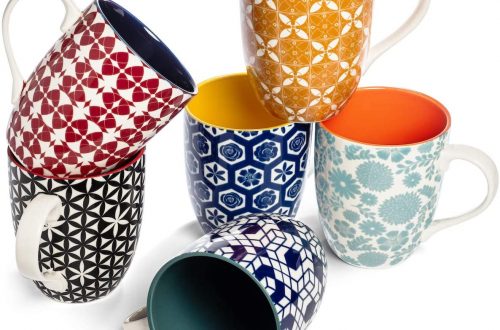
Annovera Coffee Mugs: What Makes Annovera So Popular?
May 15, 2022

